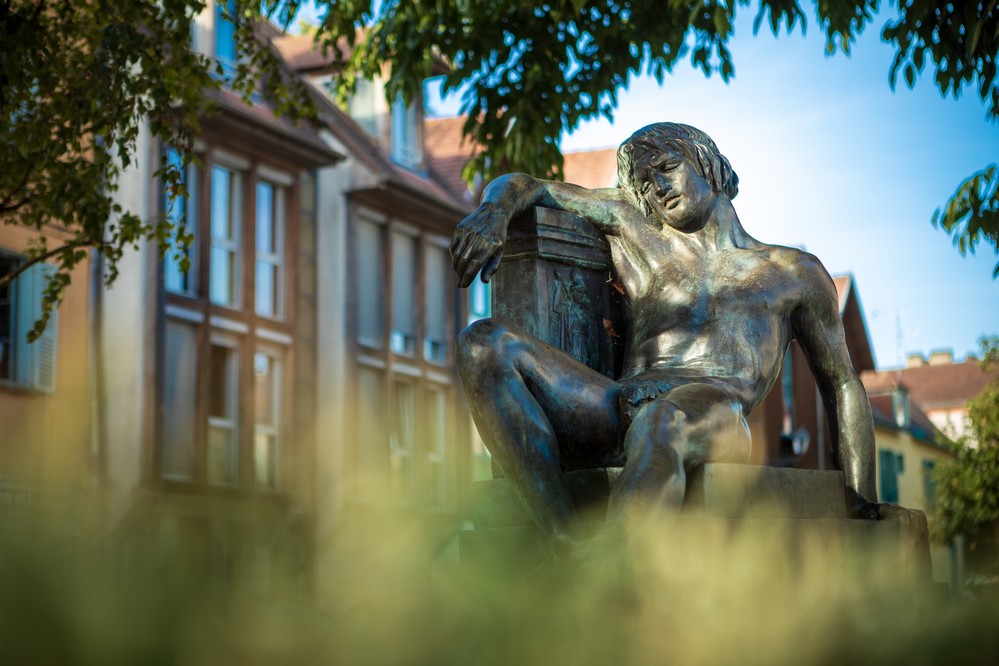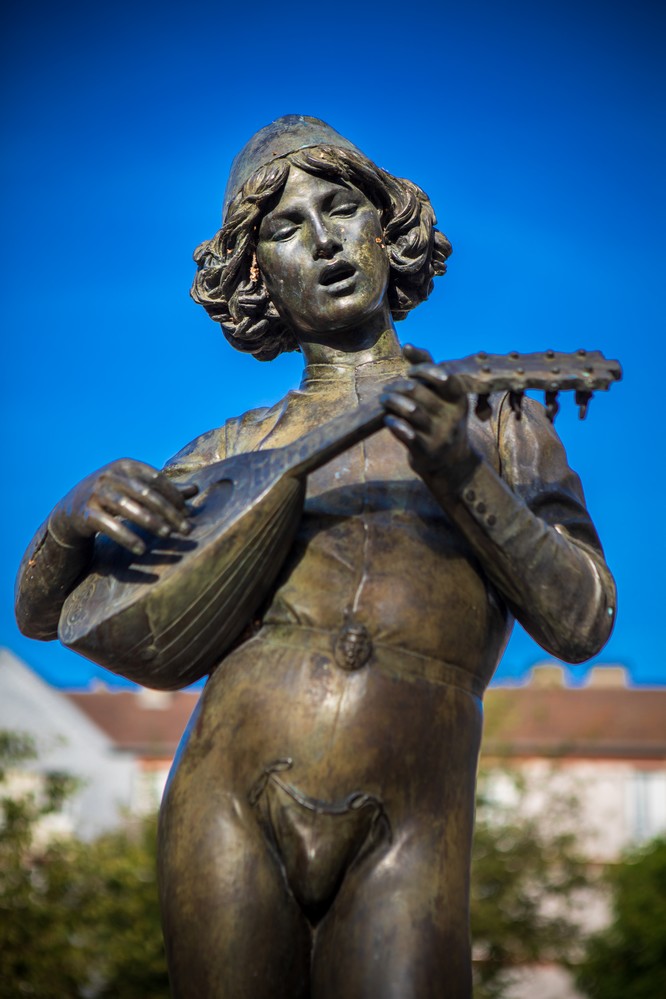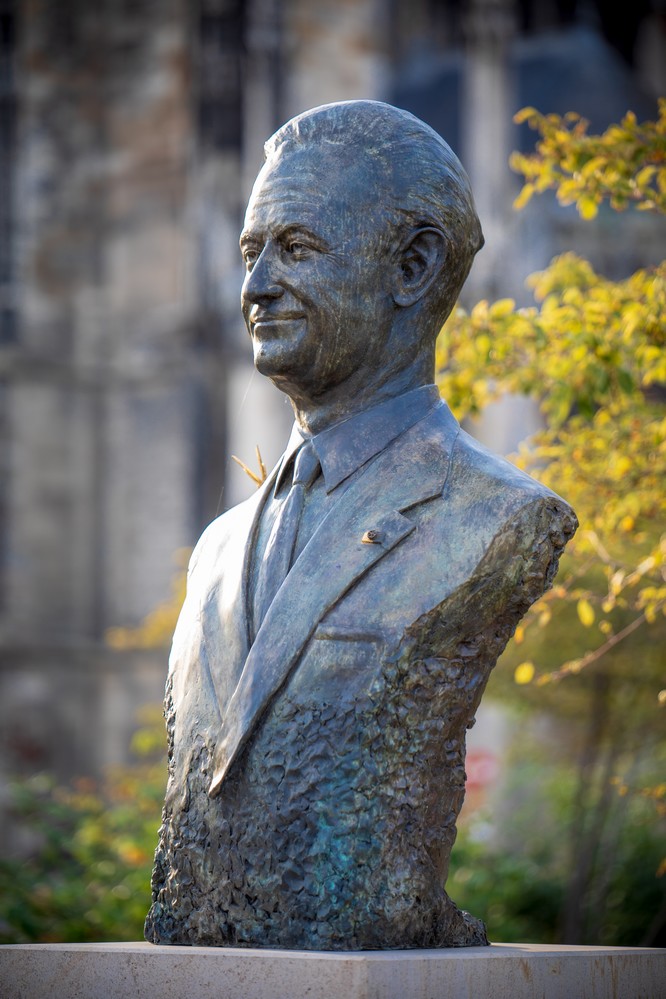Art is not confined to four walls in Troyes. It has descended into the street. The public space continues to be furnished by different building projects that are part of the urban redevelopment scheme.
That is how several contemporary works appeared on the renovated banks of the Seine over the last few years. And they have quickly become the visitors’ favourites (see our article “ The Heart of Troyes”).
The renovation of the Place Saint-Nizier, in front of the church of the same name, was the occasion to place three Aubois sculptures there: the powerful Oreste réfugié à l’autel de Pallas by Pierre-Charles Simart; the delicate Chanteur florentin by Paul Dubois (a teenager playing with a mandolin in a majestic pose) and Enfant à la fontaine by Alfred Boucher, his student. They are mouldings made from plaster models preserved by the Musée des Beaux-Arts de Troyes.
The same process was used to adorn Place Foch, opposite the town hall, with a bronze: the Idylle ou la pêche by Joseph Marius Ramus who was not born, but did die in the Aube area, and where he was Alfred Boucher’s master.
The choice of this sculpture – from which some trickster pinched the fishing rod held by the shepherd – was swayed by the creation of a sheet fountain on the edge of Rue de la République.
The very naked group in this sculpture replaced an even less covered statue: Le rapt by Auguste Suchetet, another Aube sculpture who was Paul Dubois’ student.
Le rapt was placed there temporarily during the construction of an underground car park beneath its feet on Place de la Libération.
It was returned to its initial position and the least we can say is that the classical workmanship contrasts with the very contemporary style of the new square.
This bold white-marble sculpture represents the kidnapping of a naiad by a Triton; the sea god, not an amphibian!
The original version, made of bronze, was melted in 1942 by the Germans to make shells. It was eventually replaced by the existing statue which was in the Petit Palais in Paris. Considered shameless, this spectacular work shocked public opinion when it is was mounted in 1911.

Other naked statues, all made of white marble, are exhibited with no reserve in public places. Such as L’architecture by Antonin Carlès, transported from the Grand Palais in Paris to the town hall courtyard in 1937, L’harmonie by Louis Convers in the Jardin du Beffroi, and L’inspiration, by the same artist in the Jardin de la Vallée Suisse.
These gardens, and those in Chevreuse, abound with busts representing local celebrities.
For example, there is the bust of the sculptor Alfred Boucher in the Jardin du Rocher, made by one of his colleagues. A special place has been reserved for another of Troyes’ famous sons: Edouard Herriot, academician, mayor of Lyon, several times minister and president of the Assemblée Nationale under the Third and Fourth Republic. The bust has pride of place in the square of the same name.
The sculpture tour
Museums and churches in Troyes abound with the most beautiful sculptures. Many were created during the 16th century by what came to be known as the ‘Troyes school’ whose members excelled in their different disciplines.
This art enjoyed a veritable renaissance in the 19th century thanks to a generation of artists as gifted as they were productive, whose works enriched the town and department’s heritage.


